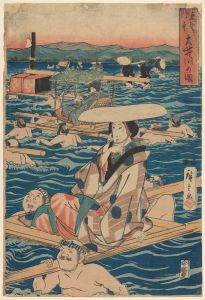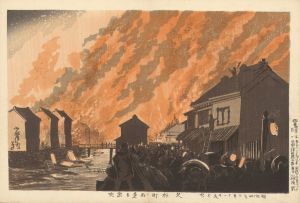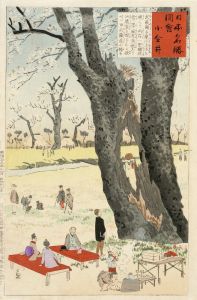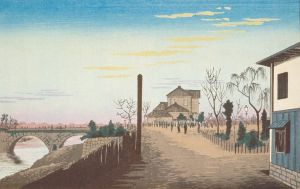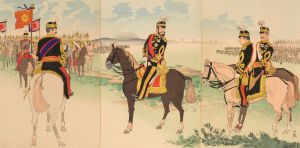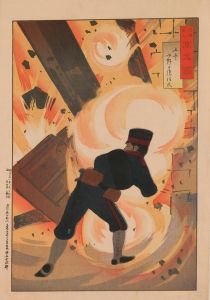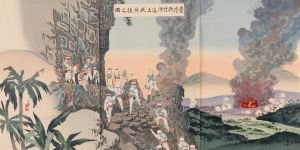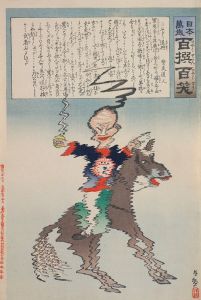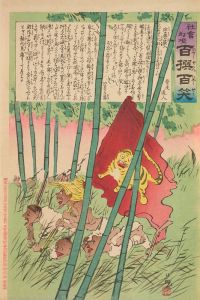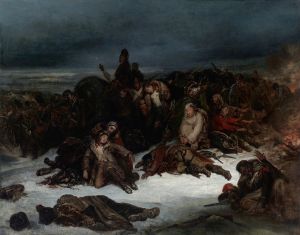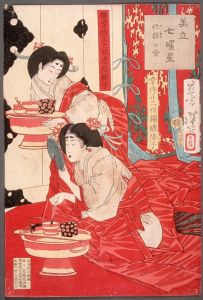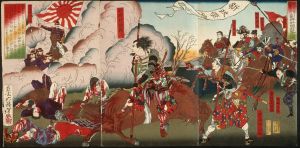
Hurrah for the Great Empire of Japan; The First Army Captures Fenghuangcheng
A hand-painted replica of Kobayashi Kiyochika’s masterpiece Hurrah for the Great Empire of Japan; The First Army Captures Fenghuangcheng, meticulously crafted by professional artists to capture the true essence of the original. Each piece is created with museum-quality canvas and rare mineral pigments, carefully painted by experienced artists with delicate brushstrokes and rich, layered colors to perfectly recreate the texture of the original artwork. Unlike machine-printed reproductions, this hand-painted version brings the painting to life, infused with the artist’s emotions and skill in every stroke. Whether for personal collection or home decoration, it instantly elevates the artistic atmosphere of any space.
"Hurrah for the Great Empire of Japan; The First Army Captures Fenghuangcheng" is a woodblock print by the renowned Japanese artist Kobayashi Kiyochika. This artwork is part of a series that depicts scenes from the First Sino-Japanese War (1894-1895), a conflict between the Qing Dynasty of China and the Empire of Japan primarily over influence in Korea. Kiyochika, known for his ukiyo-e prints, was an influential figure in the transition of Japanese art from traditional to modern styles, often incorporating Western techniques and perspectives.
The print captures a moment of triumph for the Japanese forces during the war, specifically the capture of Fenghuangcheng, a strategic location in the Liaoning Province of China. This event was part of Japan's broader military campaign in Manchuria, which was crucial for establishing Japanese dominance in the region. The capture of Fenghuangcheng was significant as it demonstrated the effectiveness and modernization of the Japanese military, which had undergone substantial reforms in the years leading up to the conflict.
Kiyochika's work is notable for its dynamic composition and vivid use of color, which convey the energy and drama of the battlefield. The print likely features Japanese soldiers in Western-style uniforms, reflecting the modernization of the Japanese army. The soldiers are depicted in action, advancing with determination, which serves to glorify the Japanese military efforts and instill a sense of national pride among viewers.
The First Sino-Japanese War marked a turning point in East Asian history, as it signaled the rise of Japan as a major imperial power and the decline of Qing China's influence. The victory at Fenghuangcheng and other battles during the war led to the signing of the Treaty of Shimonoseki in 1895, which granted Japan significant territorial gains and marked the beginning of its imperial expansion.
Kiyochika's prints from this period are not only artistic achievements but also serve as historical documents that reflect the nationalistic fervor and the political climate of Meiji-era Japan. His work provides insight into how art was used as a tool for propaganda, shaping public perception and bolstering support for Japan's military endeavors.
The print "Hurrah for the Great Empire of Japan; The First Army Captures Fenghuangcheng" is an example of Kiyochika's ability to blend traditional Japanese artistic techniques with new influences, creating a powerful visual narrative that captures a pivotal moment in Japan's history. Through his art, Kiyochika contributed to the documentation and dissemination of Japan's military successes, leaving a lasting impact on both the art world and historical scholarship.





